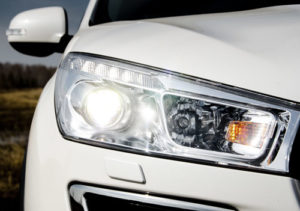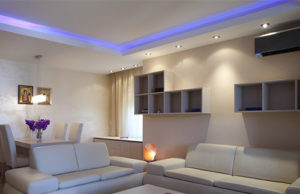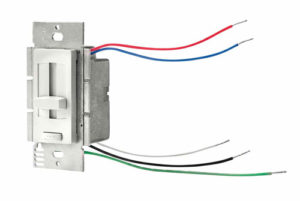Flickering is a common issue encountered by users of 12V LED lights in both residential and office settings. To effectively tackle this problem, it’s essential to grasp the fundamentals of 12V LED lights and the reasons behind flickering. In this article, we’ll delve into these aspects and provide solutions for resolving flickering problems.
Table of Contents
ToggleUnderstanding 12V LED Lights
12V LED lights, also known as Light Emitting Diodes, are commonly sourced from electronic repair supply stores and are popular among hobbyists. These lights consume minimal power, making them a preferred choice for replacing traditional incandescent bulbs in various appliances and gadgets. Their low voltage of 12 volts ensures safety, reducing the risk of electrical shocks and other hazards associated with higher voltage lighting systems.
The Rise of Flickering Issues
Despite their advantages, 12V LED lights are not immune to flickering problems. Even reputable brands may exhibit flickering due to manufacturing variations and electronic configurations. Cheaper knock-off versions are particularly prone to this issue. Flickering can manifest in two forms: visible and invisible.
Visible Flickering
Visible flickering occurs when the LED bulb emits light at a frequency detectable by the human eye, typically around 100Hz. This flickering can create a slow-motion effect and may have adverse effects on individuals, such as eye strain or headaches. To minimize visible flickering, specialized power strips designed to regulate voltage can be employed, reducing the noticeable flicker.
Invisible Flickering
Invisible flickering, while not discernible to the naked eye, can still affect electronic devices and digital imaging equipment. Rapid light fluctuations result in artifacts such as trails or streaks in photographs, indicating the presence of flickering. This type of flickering is also mitigated by ensuring a stable voltage supply to the LED lamp.
Unveiling the Common Flickering Issue in 12V LED Lights
Flickering in 12V LED lights is a prevalent issue across various applications, whether in automotive or residential settings. The reasons behind this phenomenon are multifaceted and merit thorough examination to implement effective solutions.
In both automotive and household environments, the transition from traditional lighting to LED fixtures introduces compatibility challenges. Manufacturers provide varied specifications for working with recommended electrical currents, yet flickering remains a ubiquitous concern. Unlike filament bulbs, which maintain continuous illumination despite cyclic current usage, LED lights are susceptible to visible flickering due to their semiconductor nature.
In Automotive Settings
 Flickering LED lights in vehicles demand immediate attention, particularly concerning interior and exterior lighting systems. Swapping filament bulbs for 12V LEDs may result in noticeable strobing, often attributed to loose connections or aging fuses. The vibrational stress experienced during driving exacerbates flickering, emphasizing the importance of secure installations. Additionally, issues with the car battery or alternator can compromise power delivery, adversely affecting LED performance. Timely replacements and vigilant maintenance are essential to mitigate potential safety hazards associated with deteriorating LED components.
Flickering LED lights in vehicles demand immediate attention, particularly concerning interior and exterior lighting systems. Swapping filament bulbs for 12V LEDs may result in noticeable strobing, often attributed to loose connections or aging fuses. The vibrational stress experienced during driving exacerbates flickering, emphasizing the importance of secure installations. Additionally, issues with the car battery or alternator can compromise power delivery, adversely affecting LED performance. Timely replacements and vigilant maintenance are essential to mitigate potential safety hazards associated with deteriorating LED components.
In Residential Installation
 The prevalence of alternating current (AC) in household wiring poses compatibility challenges for LED lights, which prefer direct current (DC). While AC offers safety advantages and is the standard for residential electricity, its cyclical nature can induce flickering in LEDs. This discrepancy underscores the need for additional hardware solutions to regulate current flow and ensure stable illumination. Proper installation practices and awareness of AC-DC conversion processes are paramount to addressing flickering issues effectively.
The prevalence of alternating current (AC) in household wiring poses compatibility challenges for LED lights, which prefer direct current (DC). While AC offers safety advantages and is the standard for residential electricity, its cyclical nature can induce flickering in LEDs. This discrepancy underscores the need for additional hardware solutions to regulate current flow and ensure stable illumination. Proper installation practices and awareness of AC-DC conversion processes are paramount to addressing flickering issues effectively.
By comprehensively understanding the root causes of flickering in 12V LED lights and implementing targeted solutions, users can enhance the reliability and longevity of their lighting systems. Whether on the road or at home, stable illumination is essential for safety and comfort, underscoring the importance of addressing flickering concerns promptly and effectively.
Ramifications of Ignoring Flickering LED Light Issues
Flickering LED lights are not merely a nuisance but can potentially lead to a myriad of problems, both in automotive and residential settings. Understanding the consequences of disregarding these issues is paramount for ensuring safety and well-being.
In Automotive Settings
Safety Concerns for the Driver
Faulty equipment such as flickering or burned-out LED headlamps and tail lights compromises visibility, increasing the risk of accidents. Interior LED lights, if malfunctioning, can distract the driver, posing a significant hazard. It is imperative to ensure all lights, both interior and exterior, are in optimal working condition to maintain focus and awareness on the road.
Ensuring Safety for Others
The impact of LED lights on other drivers cannot be overstated. Ultra-bright LED lamps can dazzle nearby drivers, leading to potentially hazardous situations. Additionally, flickering LED lights may trigger photosensitive epilepsy in susceptible individuals, further emphasizing the importance of proper maintenance and inspection before driving.
At Home
Effects on Eye Health
 Improperly installed LED lights can lead to eye discomfort and fatigue, particularly with prolonged exposure. Choosing the appropriate color temperature and ensuring proper installation can mitigate these risks and create a more comfortable living environment.
Improperly installed LED lights can lead to eye discomfort and fatigue, particularly with prolonged exposure. Choosing the appropriate color temperature and ensuring proper installation can mitigate these risks and create a more comfortable living environment.
Headaches
The rapid flashing of LED lights, coupled with their color temperature, can contribute to headaches. Taking breaks from prolonged exposure and seeking natural light sources can alleviate these symptoms and promote well-being.
Fatigue
Constant exposure to LED lights, especially in a stationary position, can induce fatigue. Utilizing natural light whenever possible and taking breaks to rejuvenate in sunlight can help combat fatigue and enhance overall vitality.
By addressing flickering LED light issues proactively and implementing appropriate measures, individuals can mitigate potential risks and create safer, more comfortable environments, both on the road and at home.
Troubleshooting Flickering 12V LED Lights: Causes and Solutions
Flickering in 12V LED lights can be a frustrating issue, but understanding the underlying causes and implementing appropriate solutions can help resolve the problem effectively. This guide offers insights into common reasons for LED flickering and practical tips for troubleshooting and fixing these issues.
Dimmer Switch Compatibility Issues
Dimmable LED Lights
 LED lights designed for dimming applications are essential for compatibility with dimmer switches. Using non-dimmable LED bulbs with dimmer switches can result in erratic flickering. Ensure you purchase LED lights specifically labeled for dimming to avoid this issue.
LED lights designed for dimming applications are essential for compatibility with dimmer switches. Using non-dimmable LED bulbs with dimmer switches can result in erratic flickering. Ensure you purchase LED lights specifically labeled for dimming to avoid this issue.
Faulty LED Bulbs
Brand-new LED bulbs may exhibit initial flashing as they warm up. However, prolonged or continuous flashing indicates a faulty bulb that is likely to fail soon. It’s advisable to seek a refund or replacement for such bulbs to prevent future problems.
Other Potential Causes of Flickering
Incompatible Power Supply
Using an incompatible power supply can contribute to LED flickering. Opt for PDV LED drivers designed to provide consistent voltage to LED bulbs, reducing flickering and ensuring proper illumination.
Startup Flashes
Observe the number of flashes required for an LED lamp to start up. Inadequate or incorrect power supply drivers may result in excessive flashing during startup. Verify contact points and ensure secure installation to address this issue.
Intermittent Flickering
Intermittent flickering may stem from power grid fluctuations, undersized power supplies within LED lights, or indications of a failing lamp. Test the lamp in different outlets to determine if the issue persists. Consider replacing the lamp if flickering persists, as it may indicate impending failure.
Motion Detector Interference
Faulty LED bulbs can interfere with motion detectors, causing erratic flashing. Ensure the motion detector is not detecting false signals due to LED flickering by replacing or repairing the faulty bulb.
Battery-Powered Handheld Lamps
Low battery levels in handheld LED lamps can contribute to flickering. Maintain a ready supply of batteries to ensure consistent performance and avoid interruptions during power outages.
Electrical Transformer Issues
Flashing LED indicators on electrical transformers may indicate malfunctioning or inadequate output. Consult a qualified electrician to assess and replace the transformer if necessary to ensure proper functionality.
Post-Turnoff Flickering in LED Lights
The persistence of flickering in LED lights after being turned off can occur due to residual voltage lingering in the electrical circuit, a phenomenon stemming from the delay in voltage dissipation inherent to LED technology. This residual electricity, coupled with incorrect wiring configurations, can create pathways for surges to flow back into the electrical wire, prolonging flickering episodes. Furthermore, external factors such as switches controlling night lights can introduce temporary surges, exacerbating flickering in nearby LED lights. Understanding these mechanisms underscores the importance of proper installation and wiring to mitigate post-turnoff flickering and ensure consistent performance from LED lighting systems.
Intermittent Flickering in LED Lights
Intermittent flickering in LED lights is an abnormality often triggered by the use of dimmer switches or inconsistent voltage supply. Without the appropriate PDV LED driver, LED bulbs may exhibit various issues such as flashing, strobing, and blinking, all of which can compromise their performance. These bulbs require a constant voltage supply to operate optimally, and any deviation from this standard can result in flickering. Additionally, intermittent flickering may signal defects in the bulb’s wiring or overall quality, particularly common in cheaper LED lamps manufactured overseas. Investing in reliable LED bulbs from reputable brands may incur additional costs, but the enhanced reliability and longevity they offer make them a worthwhile investment, ensuring consistent performance and longevity.
Conclusion
Flickering LED lights pose significant safety and comfort risks in both automotive and residential settings. Ignoring these issues can lead to impaired visibility, potential accidents, and adverse health effects such as eye strain and headaches. By understanding the root causes of flickering, addressing compatibility issues, and investing in quality LED bulbs, users can mitigate risks and ensure stable illumination. Proactive troubleshooting and maintenance are essential for creating safer, more comfortable environments, emphasizing the importance of addressing flickering LED light issues promptly and effectively.

